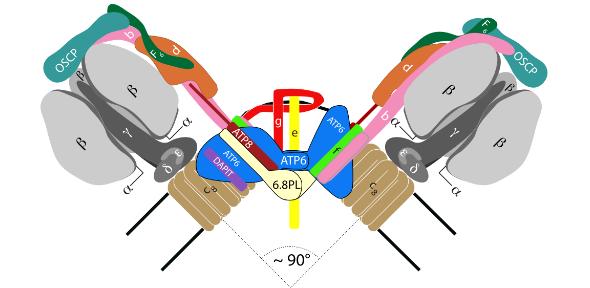
Submitted by Penny Peck on Sun, 16/06/2019 - 00:00
Mitochondria generate the cellular fuel, adenosine triphosphate, or ATP, to sustain complex life. Production of ATP depends on the oxidation of energy rich compounds to produce a chemical potential difference for hydrogen ions (or proton motive force, pmf), across the inner mitochondrial membrane (IMM).
Disruption of the IMM, dissipation of the pmf and cell death occur if the total concentration of calcium inside mitochondria is elevated sufficiently to open a pore in the IMM. It has been proposed that the pore is in the membrane sector of the ATP synthase.
Here, we show that five membrane proteins associated with the enzyme’s stator are not involved in the pore, and that the pore persists in the absence of the enzyme complex.

